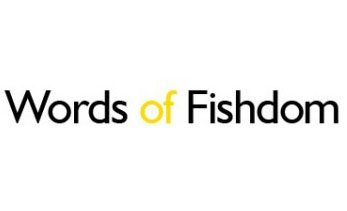Beyond Vanity Metrics: 5 Advanced ROI Measurement Techniques Used by Top Digital Marketing Agencies

In the ever-changing digital marketing world, it is not all about clicking and liking. Even though vanity metrics may offer some surface-level insights, it rarely reflects the complete truth. Leading digital marketing agencies today are focused more on advanced techniques that hit the bottom line and are in line with business objectives.
This blog goes through five advanced methods of ROI measurement, demonstrating that they are indeed one step ahead of simple vanity metrics and would help bring in real results to digital marketing campaigns.
Measuring Beyond Vanity Metrics: The Importance
While vanity metrics such as followers and likes look pretty, they rarely measure meaningful engagement or revenue growth. More sophisticated ROI measurement techniques focus on metrics that directly tie to outcomes such as conversion rates, website traffic, and return on ad spend (ROAS).
Key Benefits
- Actionable insights to refine digital marketing strategies
- Indicate areas of success and where there’s room for improvement
- Support value with tangible results for stakeholders.
For instance, a SaaS company is obsessed with its email open rate (vanity metric) and has since adjusted to monitoring its click-through rates, which yields a 20% increase in lead conversion.
1. Campaign Conversion Rate Analysis
Conversion rate is one of the most important metrics for judging ROI. Any purchase completed, form submitted, or webinar signed up for is covered under conversions and gives agencies insight into campaign effectiveness.
How It Works:
- Set up goals in tools like Google Analytics.
- Track conversions by source to find your best-performing channels.
- Use A/B testing to hone your CTAs, landing pages, and ad creatives.
Pro Tip: Pair conversion tracking with detailed audience segmentation to tailor messaging and boost engagement.
2. Maximizing Return on Ad Spend (ROAS)
The return on ad spend measures the return of every dollar in ad spend in terms of revenue. It can be used to optimize pay-per-click and display advertisements.
Calculation Steps to ROAS:
- ROAS=(Revenue from ads ÷ Ad spend)×100
- Determine the campaigns that do not perform so well. Reallocations are made real-time according to the budget based on data monitored from the campaign.
Example: A retail brand used ROAS to measure success of a holiday Google Ads campaign, which provided a 300% lift in revenue from keywords that were actually performing well for the brand.
3. Traffic and Engagement Measured on a Website
In most cases, traffic to a website is considered the goal. However, quality is what it’s all about; agencies monitor behavior of users as they ensure engagement with content through the sales funnel.
Key Metrics to Monitor:
- Average session duration to measure content relevance.
- Bounce rates to identify UX issues.
- Referral traffic to evaluate the success of specific channels.
Pro Tip: Use heatmaps to visualize user interactions and optimize page layouts for better performance.
4. Measuring Email Marketing Performance
Email marketing continues to deliver exceptional ROI when done strategically. Advanced tracking goes beyond open rates to focus on engagement and conversions.
Key Metrics:
- Click-through rates (CTR): Measure how effectively your emails drive traffic.
- Revenue per email: Measuring the value of emails in terms of money.
- Unsubscribe rates: Find out if your messaging is aligned to the audience expectations.
Example: A B2B agency implemented personalized email sequences that resulted in a 40% CTR increase and getting a 25% lift on conversions between leads to sale.
5. Aligning metrics with SMART Business Goals
ROI metrics in the best agencies correspond to SMART goals. As a result, campaigns not only maximize success but are also directly linked to business goals.
How to set SMART goals:
- Clearly define specific, measurable, achievable, relevant, and time-bound goals-for example, increase sign-ups for webinars by 20% within 3 months.
- Identify relevant metrics-these may include CTR, lead-generating, or number of sales closed.
- Keep measuring progress and update strategies.
Pro Tip: Break big goals into smaller milestones to track incremental progress effectively.
Common Hurdles in Measuring Advanced ROI
Even with the best tools and strategies, tracking advanced ROI metrics can be challenging. Agencies must navigate obstacles such as data fragmentation, multi-channel attribution and inconsistent tracking.
Solutions that will help overcome these challenges
- Invest in analytics platforms that have comprehensive reporting for unified data analysis.
- Use UTM parameters to track campaign performance across channels.
- Regular audit shall be done to ensure that tracking accuracy is maintained.
Conclusion
ROI in digital marketing must show beyond what can be seen. That is the reason why one needs to give attention to more advanced techniques of conversion rates, ROAS, and email marketing performance to indicate real bottom line influence.
For the growth of meaningful businesses, partnering with a digital marketing agency that uses data-driven strategies is the key to long-term success. Ready to move beyond vanity metrics? Start measuring what matters today.
